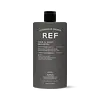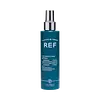What's inside
What's inside
 Key Ingredients
Key Ingredients

 Benefits
Benefits

 Concerns
Concerns

 Ingredients Side-by-side
Ingredients Side-by-side

Water
Skin ConditioningCocamidopropyl Hydroxysultaine
CleansingCocamidopropyl Betaine
CleansingCoco-Glucoside
CleansingPEG-120 Methyl Glucose Dioleate
EmulsifyingCocamidopropylamine Oxide
CleansingPEG-40 Hydrogenated Castor Oil
EmulsifyingParfum
MaskingPolyquaternium-10
Imidazolidinyl Urea
PreservativeUrea
BufferingPropylene Glycol
HumectantPanthenol
Skin ConditioningPolyquaternium-22
Limonene
PerfumingHydrolyzed Quinoa
Skin ConditioningArnica Montana Extract
Skin ConditioningChamomilla Recutita Extract
Skin ConditioningPrunus Amygdalus Dulcis Oil
Skin ConditioningButylene Glycol
HumectantQuaternium-95
UV AbsorberHelianthus Annuus Seed Extract
Skin ConditioningPropanediol
SolventMethylchloroisothiazolinone
PreservativeCI 47005
Cosmetic ColorantCI 19140
Cosmetic ColorantCI 42051
Cosmetic ColorantMethylisothiazolinone
PreservativeWater, Cocamidopropyl Hydroxysultaine, Cocamidopropyl Betaine, Coco-Glucoside, PEG-120 Methyl Glucose Dioleate, Cocamidopropylamine Oxide, PEG-40 Hydrogenated Castor Oil, Parfum, Polyquaternium-10, Imidazolidinyl Urea, Urea, Propylene Glycol, Panthenol, Polyquaternium-22, Limonene, Hydrolyzed Quinoa, Arnica Montana Extract, Chamomilla Recutita Extract, Prunus Amygdalus Dulcis Oil, Butylene Glycol, Quaternium-95, Helianthus Annuus Seed Extract, Propanediol, Methylchloroisothiazolinone, CI 47005, CI 19140, CI 42051, Methylisothiazolinone
Water
Skin ConditioningAlcohol Denat.
AntimicrobialC13-15 Alkane
SolventCetearyl Alcohol
EmollientPhenoxyethanol
PreservativeParfum
MaskingEthylhexyl Methoxycinnamate
UV AbsorberCetrimonium Chloride
AntimicrobialBehentrimonium Chloride
PreservativeGlycerin
HumectantButylene Glycol
HumectantDipropylene Glycol
HumectantEthylhexylglycerin
Skin ConditioningAmodimethicone
Prunus Persica Flower Extract
MoisturisingHelianthus Annuus Seed Extract
Skin ConditioningSodium PCA
HumectantPolyquaternium-11
Quaternium-95
UV AbsorberSodium Lactate
BufferingArginine
MaskingTrideceth-15
EmulsifyingTrideceth-3
EmulsifyingAspartic Acid
MaskingPCA
HumectantPropanediol
SolventLactic Acid
BufferingChenopodium Quinoa Seed Extract
Skin ConditioningCitric Acid
BufferingGlycine
BufferingAlanine
MaskingSerine
MaskingSodium Benzoate
MaskingValine
MaskingThreonine
Isoleucine
Skin ConditioningProline
Skin ConditioningPhenylalanine
MaskingHistidine
HumectantBHT
AntioxidantPotassium Sorbate
PreservativeAcetic Acid
BufferingSorbic Acid
PreservativePentaerythrityl Tetra-Di-T-Butyl Hydroxyhydrocinnamate
AntioxidantAlpha-Isomethyl Ionone
PerfumingLimonene
PerfumingWater, Alcohol Denat., C13-15 Alkane, Cetearyl Alcohol, Phenoxyethanol, Parfum, Ethylhexyl Methoxycinnamate, Cetrimonium Chloride, Behentrimonium Chloride, Glycerin, Butylene Glycol, Dipropylene Glycol, Ethylhexylglycerin, Amodimethicone, Prunus Persica Flower Extract, Helianthus Annuus Seed Extract, Sodium PCA, Polyquaternium-11, Quaternium-95, Sodium Lactate, Arginine, Trideceth-15, Trideceth-3, Aspartic Acid, PCA, Propanediol, Lactic Acid, Chenopodium Quinoa Seed Extract, Citric Acid, Glycine, Alanine, Serine, Sodium Benzoate, Valine, Threonine, Isoleucine, Proline, Phenylalanine, Histidine, BHT, Potassium Sorbate, Acetic Acid, Sorbic Acid, Pentaerythrityl Tetra-Di-T-Butyl Hydroxyhydrocinnamate, Alpha-Isomethyl Ionone, Limonene
Ingredients Explained
These ingredients are found in both products.
Ingredients higher up in an ingredient list are typically present in a larger amount.
Butylene Glycol (or BG) is used within cosmetic products for a few different reasons:
Overall, Butylene Glycol is a safe and well-rounded ingredient that works well with other ingredients.
Though this ingredient works well with most skin types, some people with sensitive skin may experience a reaction such as allergic rashes, closed comedones, or itchiness.
Learn more about Butylene GlycolHelianthus Annuus Seed Extract comes from sunflower seeds.
Sunflower seeds are rich in vitamin E. Studies show sunflowers contain antimicrobial and antioxidant properties.
The fatty acids found in sunflower seeds include (from highest amount to least): linoleic acid, myristic acid, palmitic acid, stearic acid, arachidic acid, oleic acid, and linolenic acid.
These fatty acids hydrate your skin. Emollients create a film on the skin to prevent moisture from escaping.
Learn more about Helianthus Annuus Seed ExtractLimonene is a fragrance that adds scent and taste to a formulation.
It's found in the peel oil of citrus fruits and other plants such as lavender and eucalyptus. The scent of limonene is generally described as "sweet citrus".
Limonene acts as an antioxidant, meaning it helps neutralize free radicals.
When exposed to air, oxidized limonene may sensitize the skin. Because of this, limonene is often avoided by people with sensitive skin.
The term 'fragrance' is not regulated in many countries. In many cases, it is up to the brand to define this term. For instance, many brands choose to label themselves as "fragrance-free" because they are not using synthetic fragrances. However, their products may still contain ingredients such as essential oils that are considered a fragrance.
Learn more about LimoneneParfum is a catch-all term for an ingredient or more that is used to give a scent to products.
Also called "fragrance", this ingredient can be a blend of hundreds of chemicals or plant oils. This means every product with "fragrance" or "parfum" in the ingredients list is a different mixture.
For instance, Habanolide is a proprietary trade name for a specific aroma chemical. When used as a fragrance ingredient in cosmetics, most aroma chemicals fall under the broad labeling category of “FRAGRANCE” or “PARFUM” according to EU and US regulations.
The term 'parfum' or 'fragrance' is not regulated in many countries. In many cases, it is up to the brand to define this term.
For instance, many brands choose to label themselves as "fragrance-free" because they are not using synthetic fragrances. However, their products may still contain ingredients such as essential oils that are considered a fragrance by INCI standards.
One example is Calendula flower extract. Calendula is an essential oil that still imparts a scent or 'fragrance'.
Depending on the blend, the ingredients in the mixture can cause allergies and sensitivities on the skin. Some ingredients that are known EU allergens include linalool and citronellol.
Parfum can also be used to mask or cover an unpleasant scent.
The bottom line is: not all fragrances/parfum/ingredients are created equally. If you are worried about fragrances, we recommend taking a closer look at an ingredient. And of course, we always recommend speaking with a professional.
Learn more about ParfumPropanediol is an all-star ingredient. It softens, hydrates, and smooths the skin.
It’s often used to:
Propanediol is not likely to cause sensitivity and considered safe to use. It is derived from corn or petroleum with a clear color and no scent.
Learn more about PropanediolWe don't have a description for Quaternium-95 yet.
Water. It's the most common cosmetic ingredient of all. You'll usually see it at the top of ingredient lists, meaning that it makes up the largest part of the product.
So why is it so popular? Water most often acts as a solvent - this means that it helps dissolve other ingredients into the formulation.
You'll also recognize water as that liquid we all need to stay alive. If you see this, drink a glass of water. Stay hydrated!
Learn more about Water